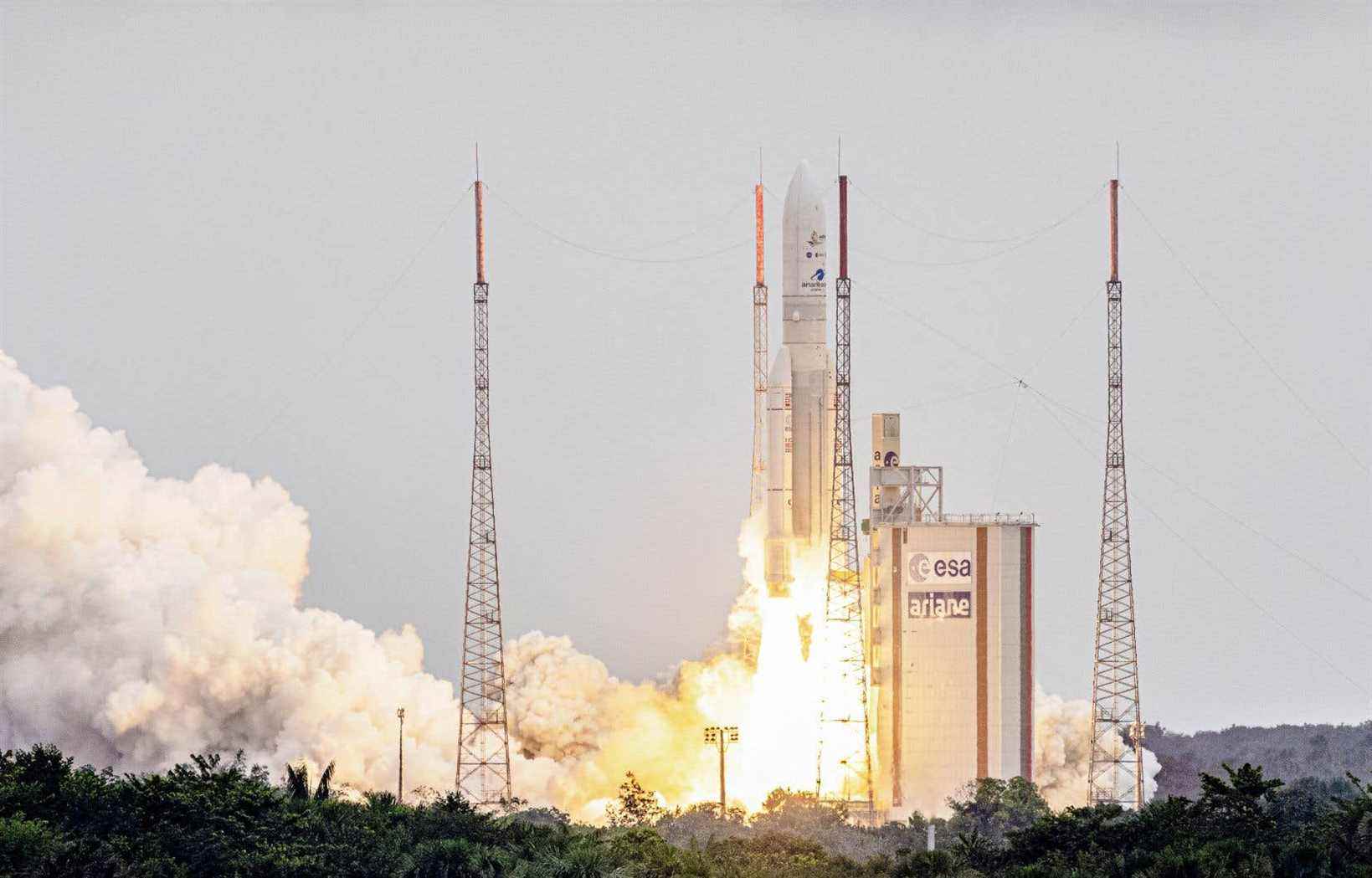The Ariane 5 rocket successfully injected the James Webb space telescope on Saturday into its final orbit, which it will reach in a month, announced the director of launch operations present at the Guyana Space Center.
“Good separation Webb telescope, Go Webb”, announced Jean-Luc Voyer from the jar of the control center in Kourou. The upper stage of the Ariane rocket released after 27 minutes of flight the telescope, which will now take about a month to reach its observation post 1.5 million km from Earth.
Ariane 5 had risen in the sky of Kourou on time, carrying the most sophisticated observation instrument of the Universe to go into space.
Manufactured by NASA, with the collaboration of the European (ESA) and Canadian (ACS) space agencies, the precious cargo flew over the Atlantic, then Africa, until the final separation, which took place at an altitude of 1400 km and a speed of over 34,000 km / h.
An on-board camera on Ariadne’s upper floor showed this separation and especially the deployment a few seconds later of the solar panels of the James Webb. The images of this critical moment, to ensure in particular the power supply of the telescope instruments, triggered a thunder of applause in the Jupiter center, as loud as that which had marked the success of the separation.
The controls of the James Webb are now in the hands of Nasa, from the Space Telescope Science Institute in Baltimore (United States).
It will supervise the delicate deployment operations of the observatory, before its arrival at the Lagrange 2 point, 1.5 million kilometers from Earth. Scientific exploration of the cosmos will begin in six months.
See the first galaxies
Imagined by NASA from the launch of Hubble in 1990, and built from 2004, with the collaboration of the European (ESA) and Canadian (CSA) space agencies, the JWST differs in more than one way.
The size of its mirror, with a wingspan of 6.5 meters, gives it a surface area and therefore a sensitivity seven times greater, sufficient to detect the thermal signature of a bumblebee on the Moon.
Another difference: its mode of observation. Where Hubble observes space primarily in the domain of visible light, James Webb ventures into a wavelength that eludes the eye: near and mid-infrared. A radiation that any body, star, human or flower, emits naturally.
This light will be studied by four instruments, equipped with imagers and spectrographs to better dissect it. Their development mobilized a plethora of engineers and scientists, under the leadership of American and European laboratories and industrialists.
Thanks to this “by looking at the same objects (as with Hubble), we will see new things”, explained in Paris the astronomer Pierre Ferruit, scientific co-head of the telescope for ESA. For example the first galaxies, objects whose distance made their lights turn red. Or the young colonies of stars, which grow up hidden in the dust clouds of their nurseries. Or the atmosphere of exoplanets.
The prerequisite for the proper functioning of the JWST is an ambient temperature so low that it does not interfere with the examination of the light.
Hubble orbit some 600 km above Earth. At this distance, the JWST would be unusable, heated by the sun and its reflection on the Earth and the Moon.
It will be placed at the end of a one-month trip 1.5 million km away. And will be protected from solar radiation by a thermal shield of five flexible sails which will dissipate the heat, lowering the temperature (which is 80 °) to -233 degrees on the telescope side.
